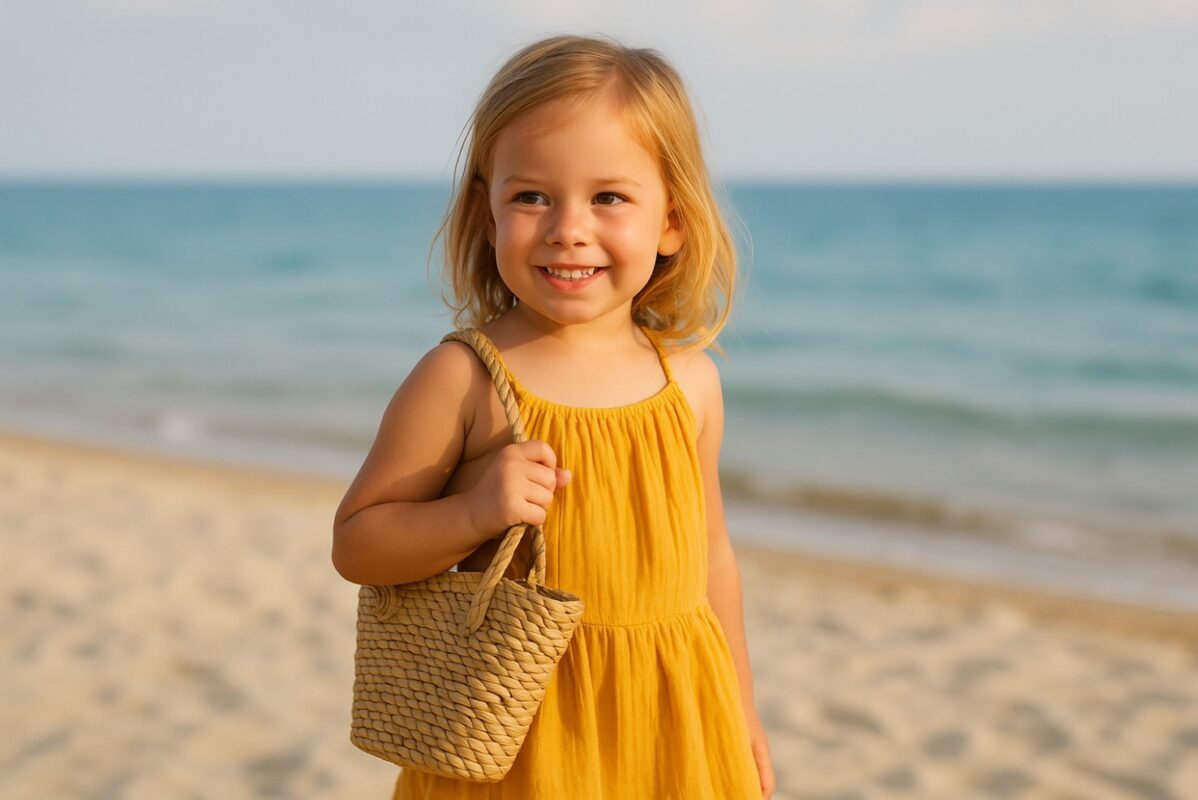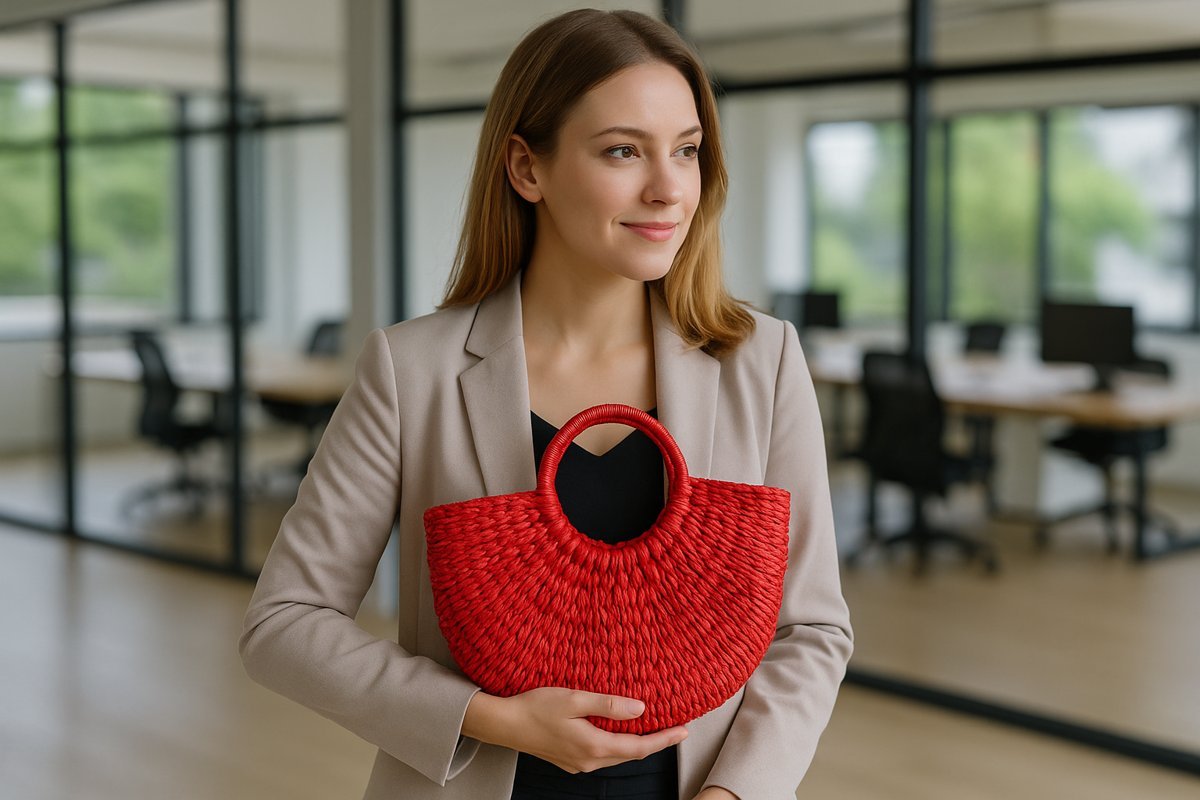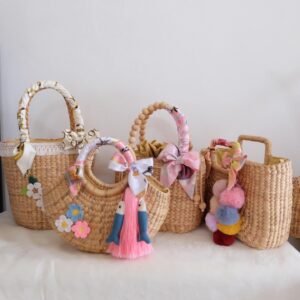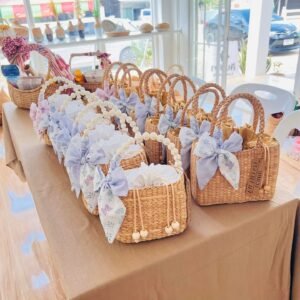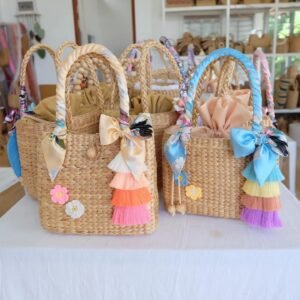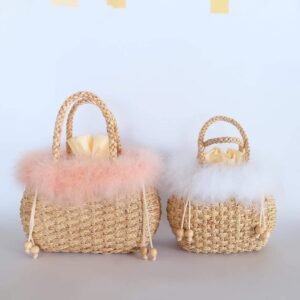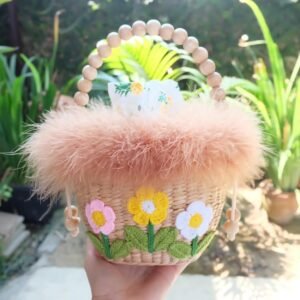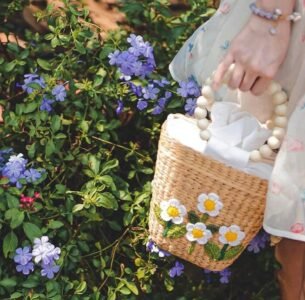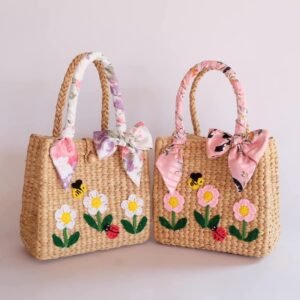Choosing the Perfect Material for Bags Isn’t Just About Fashion
Selecting the ideal material for a handbag is about far more than following seasonal trends. It’s about making a choice that reflects your style, meets your practical needs, and aligns with your values—especially regarding sustainable fashion. Whether you’re a designer, a manufacturer, or simply someone who appreciates a well-made bag, understanding the importance of material choice is key.
In today’s increasingly eco-conscious world, materials matter more than ever. Consumers want stylish, durable, and environmentally responsible bags—which is why straw has become such a standout material in the industry.
Lightweight, naturally beautiful, and surprisingly strong, straw has a renaissance as a go-to fabric in bag design. Once considered a beach-day staple, it’s now recognised as one of the most versatile and eco-friendly bag materials available.
The Rise of Straw in Bag Manufacturing
Straw has long played a practical role in human history, traditionally used for everything from bedding to roofing. As a natural byproduct of agriculture, it’s incredibly sustainable—renewable, widely available, and biodegradable.
Its recent popularity in fashion, particularly in bag manufacturing, is no coincidence. Straw bags strike the perfect balance between rustic texture and refined design, offering a tactile, organic feel that’s both chic and environmentally sound.
Thanks to modern craftsmanship, straw is used in everything from spacious market totes to minimalist clutches and structured satchels. As demand for sustainable fashion accessories grows, straw continues to prove itself as a stylish and planet-friendly material.
Why Straw Bags Are an Eco-Friendly Choice
The appeal of straw bags goes beyond aesthetics. They represent a conscious lifestyle choice rooted in sustainability.
Eco-conscious: Made from natural fibres like wheat straw, raffia, and seagrass, these bags break down naturally at the end of their life—unlike synthetic alternatives that contribute to long-term landfill waste.
Durability: Despite being lightweight, straw is a surprisingly strong material. A straw bag can be a stylish and reliable companion for years when properly woven and maintained.
Unique texture: One of the straw’s most appealing qualities is its natural texture. Every piece feels organic, earthy, and beautifully imperfect. No two straw bags are ever exactly alike, adding to their individual charm.
Design versatility: From relaxed holiday styles to high-end designs endorsed by fashion houses like Chanel and Dolce & Gabbana, straw bags have proven their place in casual and luxury markets.
What to Consider Before Choosing Straw for Bags
Like any material, straw comes with its own set of considerations. Understanding these limitations helps manufacturers and consumers make better-informed decisions.
Not fully weatherproof: Straw is a natural material, so it isn’t ideal for heavy rain or damp environments. Its porous structure makes it less water-resistant than coated fabrics or leather, which may limit its use in some climates.
Requires care: Straw bags need thoughtful storage and gentle handling. They should be kept in dry, shaded areas and never overloaded to preserve their shape and structure.
More casual appearance: While many straw bags have found their way into high-end collections, their aesthetic often leans more relaxed. They may not always align with formal or business wear unless carefully styled.
Vulnerable to rough handling: Compared to synthetic materials, straw can show signs of wear if frequently bent, dropped, or exposed to moisture. Regular cleaning and maintenance are important to maintain quality and shape.
Understanding the Production Process
AppreciatingAppreciating the value of a straw handbag helps one understand how it’s made. Creating a beautiful, functional straw bag takes craftsmanship, care, and dedication.
Sourcing straw: Popular varieties include raffia, made from palm tree leaves (typically found in Madagascar), and wheat or rice straw, derived from crop waste. Raffia is especially prized for its softness and flexibility.
Harvesting and drying: After harvesting, the fibres are stripped, cleaned, and sun-dried with minimal mechanical intervention. This low-energy process makes straw production environmentally efficient.
Weaving: The dried fibres are then carefully woven by hand or with basic tools, depending on the design. Patterns range from tight plaits to open weaves, requiring precise skill and experience.
Assembly and stitching: Once woven, the material is shaped into the bag form, often supported with fabric linings or reinforced edges. Handles, zips, closures, and decorative finishes are then added.
Each step in this process supports artisan communities and reinforces the sustainable nature of straw as a fashion material.
The Environmental Advantages of Straw Bags
As we strive for more responsible fashion, the environmental benefits of straws become increasingly important.
Biodegradable: Straw naturally decomposes over time, returning to the soil without leaving toxic waste or microplastics. It’s one of the most environmentally safe options for disposable or long-lasting accessories.
Recyclable and reusable: Beyond composting, many straw products can be recycled or repurposed—into new designs, décor, or insulation. This circularity makes them ideal for eco-conscious brands.
Renewable and low impact: Because straw is a byproduct of crops, it requires no additional land or resources. It uses fewer chemicals and less water than synthetic materials and can be harvested annually without damaging the environment.
Certifications like GOTS: When certified by standards such as the Global Organic Textile Standard (GOTS), straw materials meet rigorous sustainability and ethical criteria—from farm to finished product.
These credentials matter, especially for consumers who want to support brands that take environmental impact and social responsibility seriously.
Conclusion: Straw as a Smart, Sustainable Material
Straw is more than just a seasonal fashion trend—it’s a durable, stylish, and planet-friendly material that is changing how we think about bag design. While it may not be suitable for every situation, its advantages far outweigh the limitations when thoughtfully used.
For designers, straw offers a medium for creativity and craftsmanship. For consumers, it offers beauty with a conscience. A straw bag is a fashion-forward and future-friendly choice, whether after a resort-ready tote or a structured satchel for everyday use.
We support a more sustainable, transparent, and ethical fashion industry by choosing natural materials like straw. And in doing so, we carry more than just our essentials—our values.



